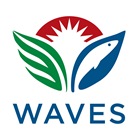Nature-Based Solutions Offer Best Investment for Flood Protection
A growing body of evidence shows wetlands and reefs reduce flooding and erosion in adjacent communities better than hard infrastructure does.
Putting a Value on the Ecosystem Services Provided by Forests in the Eastern United States: Case Studies on Natural Capital and Conservation
Natural barriers are a key defense against storms like Harvey and Irma
Now we have the science to value the economic and social benefits of natural infrastructure like wetlands and reefs.
Mighty mangroves of the Philippines: Valuing wetland benefits for risk reduction and conservation
The WAVES program, The Nature Conservancy and others worked closely with the Philippines Government to assess the value of mangroves nationally.
Natural Capital Mapping and Accounting in Liberia: Understanding the contribution of biodiversity and ecosystem services to Liberia's sustainable development
Valuing Protective services of Mangroves in the Philippines - Technical Report
Can You Put A Price Tag On Nature? Actually, Yes
The Natural Capital Project, a partnership of Stanford University, University of Minnesota, The Nature Conservancy and the World Wildlife Fund brings together academics, software engineers and other professionals to integrate the value nature creates into policy decisions.
As Flood Risks Rise, Engineers, Ecologists and Economists Come Together
New comprehensive Guidelines for Measuring and Valuing the Coastal Protection Services of Mangroves and Coral Reefs make clear that Mangroves and coral reefs provide significant coastal protection benefits.
World Bank Partnership Releases New Guidelines for Better Valuing Natural Solutions for Coastal Protection
WAVES and a team of cross-sector researchers led by The Nature Conservancy released a new report to more effectively value nature-based solutions for reducing coastal risks.
